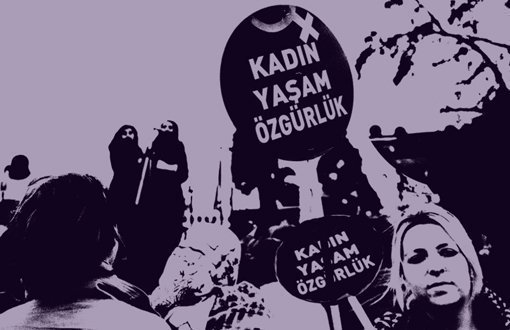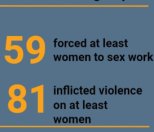Click to read the article in Turkish/Kurdish
One trans woman was killed, another was injured in July. In both incidents, perpetrators were boyfriends of the women.
Men killed at least 140 women and seven children; raped 42 women; harassed 130 women; forced
Homicide
In July, men killed 19 women and one girl; killed three men and injured five others who attempted to intervene in.
One of the women murdered in July was trans. Two women were not from Turkey; a woman from Azerbaijan was killed by her boyfriend, and a woman from Germany was killed by her neighbor who tried to rape her.
10 percent of the murders occurred despite women’s complaints. A man injuring his wife and released a month ago was arrested when he murdered his wife. A woman had called her family and asked for help a day before she was murdered.
One of the women murderers left the prison on permission and committed suicide. Four women were killed in the middle of the street and 15 others were killed at their homes.
One woman was killed for attempting to divorce and one other was killed for rejecting the proposal to get married. One woman was killed by the husband of her daughter who wanted a divorce.
45 percent of the murders were committed with firearms:
Five women were murdered with gun; four with rifle; four with knife; four by being strangled in throat; two by being battered; one by being thrown off the balcony.
55 percent of the women were murdered by their partners:
Seven women were killed by their husbands of official marriage; two by husbands of religious marriage; two by their boyfriends; one by her relative; one by her father; one by her son-in-law; one by her ex-husband; one by her ex-boyfriend; one by her brother; two by their neighbors; one by her son.
The cities where femicides occurred are Ankara (1), Antalya (2), Antep (1), Aydın (2), İstanbul (6), İzmir (2), Konya (1), Manisa (1), Mersin (1), Samsun (1), Urfa (1), Uşak (1).
Rape
10 rape incidents were reported in the media in July. Three of the raped women were with disabilities. One was a refugee from Ghana. 60 percent of the rapists were stranger men.
Six women were raped by stranger men; one by a man she knew; one by her husband; one by her employer. Acquaintance of one woman with the rapist wasn’t covered by the media.
Two of the rape incidents occurred at home where women were seized; two at women’s homes; one at a workplace; one in a vehicle; one on the street; one on the overpass.
Judicial process
Only five of the 16 rapists were arrested. Five rapists were released on probation, one was released after being deposed. One rapist was arrested for another crime he committed.
Judicial process about the other rapists wasn’t reported in the media. Expressions “wanted”, “escaped”, “captured” were used for the rapists. The process after capturing of two rapists weren’t reported in the media.
Sex work by force
At least 13 women were forced to sex work. None of them were citizens of Turkey.
Harassment
At least 28 harassment cases against women were reported in the media. Three of the women were subjected to harassment and verbal assault on the pretext of the way they dressed.
11 percent of the harassment incidents occurred in public transportation; 14 percent in places such as café and shop; 53 percent in public places including park, beach, street.
89 percent of the harassers were stranger men.
25 women were harassed by male strangers; one woman by her acquaintance; and one woman by her relative. In one incident, the degree of acquaintance between the harasser and the woman was not reported in the news.
Two harassers were battered by the people in the vicinity or the relatives of the woman.
Judicial process Only four of the 24 harassers were arrested. One harasser was arrested on the ground of a final verdict issued for him on other charges. Three harassers were released after their depositions. One harasser was caught, battered and handed over to police by the relatives of the woman. As for one harasser, against whom no legal action had been taken, the woman he harassed exposed him on social media, which led to an investigation being launched against him. In İstanbul, though a woman wanted to take a legal action against the harasser, police officers did not take any action and threatened her by stating that a lawsuit could be filed against her. Another harasser, against whom no legal action had been taken, wanted to file a criminal complaint against the woman due to her clothes. |
Child abuse
In July, men sexually abused at least 42 girls. One of the abusers was previously imprisoned on charge of child abuse and released.
23 of the children were abused by male strangers; three children by their relatives; one of them by her father; one child by her brother; one child by professional soldiers on duty in the city; one child by the civil servants in the public institution where she worked; one child by her employer; one child by a worker in a hotel where she stayed with her family; one child by her teacher; one child by the driver of the school bus; and one child was abused by her sports trainer. The degree of acquaintance between six children and the harassers was not reported in the news.
Judicial process 7 abusers were battered by the relatives of the children or the people in the vicinity. Three of them were handed over to police after lynching attempts and arrested. Only 30 of the 62 abusers were arrested, five of them were released. The videos, which were presented to court as evidence by the man who was sentenced to 34 years in prison for sexually abusing her students and which had the video footage of girls, were shared on social media; but, no legal action was taken about it. No legal action was taken against three abusers, who worked as professional soldiers and drivers in Turkey’s southeastern province of Şırnak, sexaully abused a 14-year-old girl and shared the videos on social media Three civil servants, who worked in a public institution and abused a 16-year-old intern, were only suspended from their duties; no legal action was taken against them. The judicial processes of the other abusers were not reported in the news. |
Violence
In July, men injured at least 32 women, three of them seriously.
12.5 percent of the women were killed because they demanded separation/divorce; one woman was killed by the husband of her daughter, whom she wanted to divorce and one woman was killed by the husband of her neighbor, whom she wanted to divorce.
Two violence-injury incidents happened despite restraining orders and one incident despite the criminal complaint of the woman. One man, who was released on probation on charge of domestic violence, seriously injured his wife and her mother with gun.
25 percent of the violence incidents occured in public places such as streets, busses and cafes.
62.5 percent of the women were inflicted violence by their partners or ex-partners.
11 women were subjected violence by their husbands; three of them by their boyfriends; two of them by the husbands of their daughters; one woman by the ex-husband of her friend; one woman by her father; one woman by the driver of the public bus; one woman by her brother-in-law and mother-in-law; one woman by her neighbor; one woman by “the men from the neighborhood”; one woman by her acquaintance; three women by male strangers.
Judicial process Only three of the 32 offenders were arrested. Three offenders committed suicide after the incident, one man was killed by her girlfriend, whom he seriously wounded with a knife. 10 men were taken into custody, it was alleged that one of them committed suicide in the detention room. The judicial processes of the other detained were not reported in the news. In one incident, the driver of the public bus who battered a woman in his bus filed a criminal complaint against the woman. No legal action was taken against the offenders of three violence incidents. The judicial processes of the other offenders were not reported in the news. In one incident, the name and photographs of a woman, who was subjected to systematic violence by her husband and settled in another city to escape from her husband, were exposed in the media. |
(ÇT/TK/SD)







.jpg)



